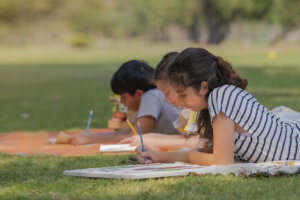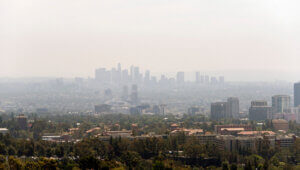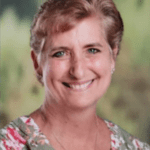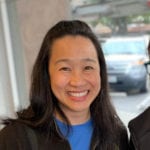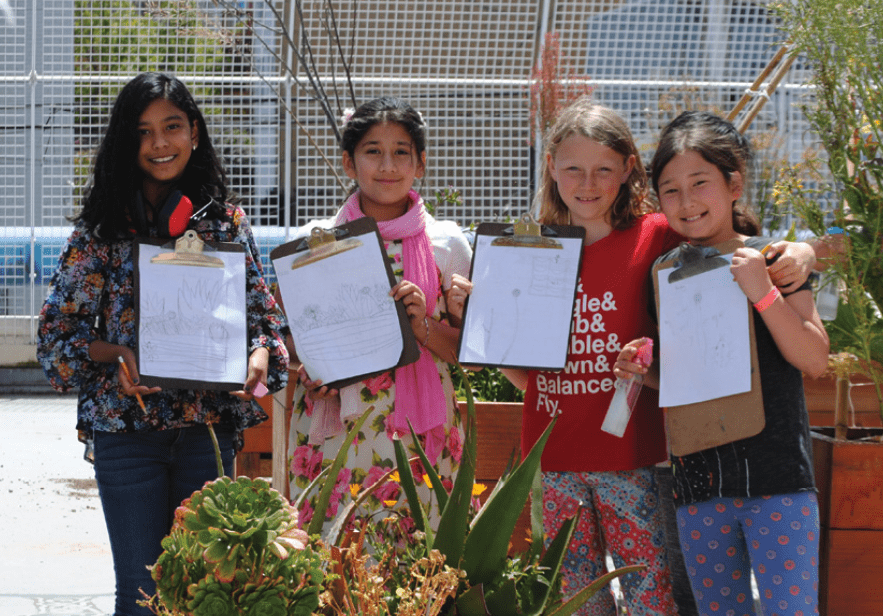While the California Environmental Literacy Initiative aims to make environmental education engaging and relevant for more students, it also is designed to support teachers as they share real-world lessons and encourage their students to explore their local environments. Members of the Initiative, such as the San Mateo County Office of Education, collaborate with teachers to help students gain the skills they need to handle critical issues and succeed in their lives and careers.
Launched in the 2017-2018 school year, the San Mateo County Office of Education’s Environmental Literacy and Sustainability Initiative “promotes environmental literacy and helps prepare leaders to integrate environmental sustainability and a climate ready mindset, across a school community’s campus, curriculum, community and culture.” We asked three teachers who participated in the San Mateo Environmental Learning Collaborative (SMELC) Teacher Fellowship Program for examples of how the program has benefitted them and their students—and why it’s vital for the long-term health of our planet:
- Jadelyn Chang, a kindergarten teacher at Foster City Elementary in the San Mateo-Foster City School District.
- Corinna Low, a teacher at Westborough Middle School in the South San Francisco Unified School District.
- Silvia Martinez, a kindergarten teacher at Ormondale School in the Portola Valley School District.
In this Q&A, they share their thoughts on the value of the SMELC Fellowship and its innovative role in creating solutions for a healthier Earth.

Tell us what sparked your interest in the SMELC Teacher Fellowship. How did you hear about it, and why did you take steps to get involved?
Jadelyn Chang: I was part of a team of four colleagues who had been interested in starting a schoolwide composting program. The previous year we had done groundwork but were stalled in getting the effort off the ground. When I saw the SMELC Zero Waste Teacher Fellowship Cohort, a few of us decided to apply. To our delight, we all were accepted into the program and embarked on a journey that not only helped us usher in change but changed our lives—and our students’ lives as well.
Silvia Martinez: If you need proof that the initiative is valuable, consider that I’m a three-time participant! Last summer, I took my third SMELC fellowship. Through a Clean Energy Summer Fellowship with the San Mateo County Office of Education, I developed a “Clean Energy Solutionary” unit. Each fellowship has built upon the other while empowering me to establish a solutionary classroom culture and embed environmental components into every part of our curriculum. Ideas and lessons learned continually transfer into all other curricular areas and our daily lives.
What were your most important takeaways from the SMELC Teacher Fellowship program? What makes it different from other professional development you’ve taken part in previously?
Corinna Low: One of the most important takeaways was just how critical it is for all educators to make environmental literacy a part of their curriculum, no matter what subject they teach. I have taught seventh-grade science for 15 years now, and the environmental issues we are facing today are not exclusively a science problem. I often find myself engaged in discussion with my students about a problem that leads us down various pathways that require a deeper knowledge of history, political contexts, data analysis of numbers, evaluation of arguments, and so much more. It’s more than I can cover in one period of science but all very important for students to understand.
Another takeaway was that real learning comes from a very real place. Before the program, I would just focus on the science behind the problems so that it wouldn’t get “too messy” in terms of where the discussion would head. I did not give students time to reflect and process the natural feelings that accompany learning about global environmental issues. Participating in SMELC brought this to my attention in one of the lessons we covered, and I came to realize that I was missing out on a major engagement opportunity.

Tell us more about that engagement opportunity.
Corinna Low: As educators, we sometimes tend to shy away from topics that can be controversial or complicated; for me, it was anything that got too emotional. But the reality is that students appreciate our honesty and it allows them to feel like they are safe to question, be conflicted, or to be OK with not knowing. And it is those feelings that keep them genuinely thinking about and reflecting on what we learned, even after they have left the classroom. That is where the real learning happens, because they are driven to learn more on their own.
The SMELC Teacher Fellowship Program is different from other professional development for several reasons. You spend the entire time learning and working toward the goal of creating a unit you care about with a community of kind and like-minded people supporting you through the process. Being with people who are passionate and excited about what we learn and teach is my energy source. Those people are what makes this program exceptionally unique and successful.
How do you see what you’ve learned through SMELC impacting your students?
Jadelyn Chang: My participation in this program has impacted my life, and has in turn impacted the lives of my students and, ultimately, my school, which is the largest in the district with just under 900 students. The amount of garbage we were generating on a daily basis from lunch alone was between 25-30 garbage bags. All of this was going straight to the landfill. We worked with community partners like the San Mateo County Office of Sustainability, Rethink Waste and Recology to educate the entire student body and implement a schoolwide composting program.
In my kindergarten classroom, we work hard on generating less waste that goes to the landfill. Most of the garbage we generate is paper and recyclable. We also eat a class snack that generates very little packaging waste and we compost any food that is uneaten. Our “Green Team” includes more than 80 students who help each week at recess and lunch. After an initial waste audit and a follow-up waste audit, we estimate that we are sending 80% less in weight to the landfill each day.
Silvia Martinez: Like Jadelyn says, the lessons that provide real-world examples for students are so valuable. Each solutionary unit engages the children’s curiosity and, more importantly, empowers them to want to do something about it. For example, my “Clean Energy Solutionary” unit replaced the traditional and, in my opinion, wasteful “gingerbread house” project that many kindergarten classes do around the holidays. Instead, my students become inspired and ready to become real-world problem solvers by designing a model solution: a “Clean Energy, Earth Friendly House.”
They each design and construct an Earth-friendly model house that uses clean energy so they could teach others how to reduce their carbon footprint and reduce waste. The houses my students create address climate change by focusing to reduce our carbon footprint and our wasted energy, and to live slightly differently without making sacrifices.
Corinna Low: Yes, engaging the students is key. My students have been inspired to take a more proactive approach to life and realize they have the power to make an impact on the planet. I’ve incorporated so many great resources and ideas from SMELC into my own curriculum that I come into school excited to teach. That excitement usually spreads to my students, and they see from the lessons that what they do does matter. In fact, every action has a ripple effect on a global scale.

Can you give us a few examples?
Corinna Low: Sure. My students have participated in youth climate protests and gone out into the community to participate in coastal clean-ups and native plant restorations. They have formed green clubs like the Planeteers, who collect, package and ship our hard-to-recycle items to Terracycle, or the Compost Club, who are out there every day at lunch monitoring the trash and compost bins. The Planeteers have been instrumental in getting our district to agree to start a lunchtime share table at our school, and we have successfully reduced our food waste this year and fed more hungry students.
In seventh grade, one of our final projects is to write a “Take Action” letter to leaders who can help them make a difference. The students select a topic that’s important to them and they write a letter that provides an introduction and scientific background information about the topic, suggests feasible solutions, and makes a request. Students are so excited if they receive a response, and it validates that idea that they can make a positive impact on our world. I post the letters on the wall in the hallway so everyone can see the responses.
Without participation in SMELC, I don’t know that I would have become the science teacher I am today. It is a highlight of my summer to get paid to learn, create new curriculum, and collaborate with awesome people.




